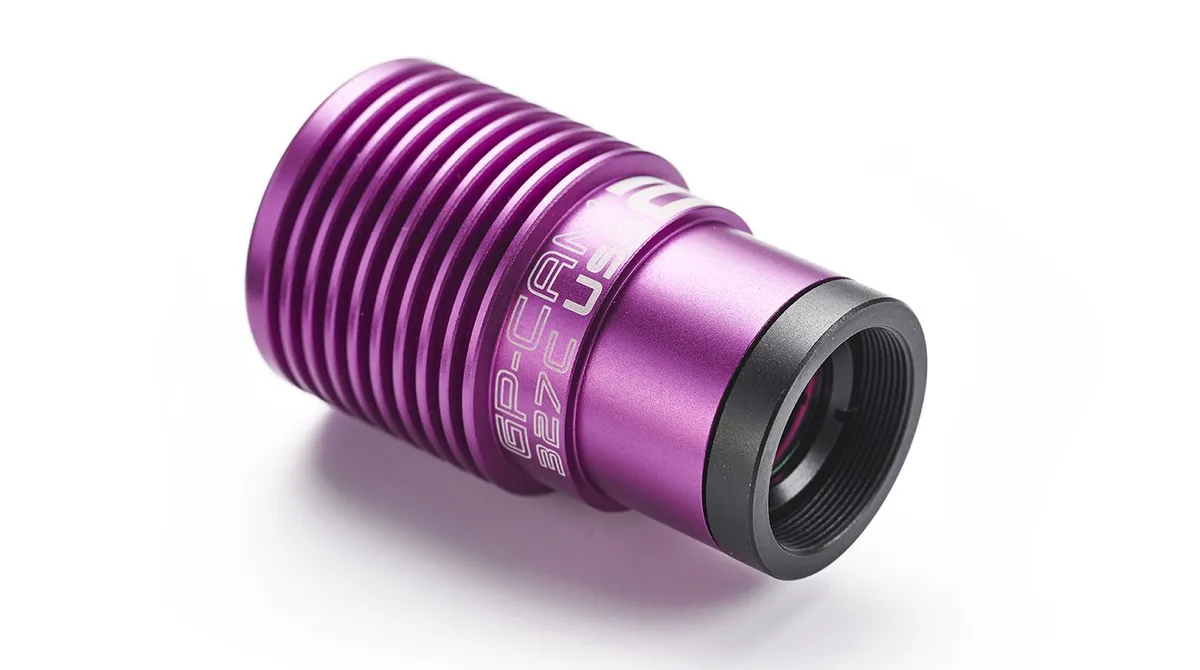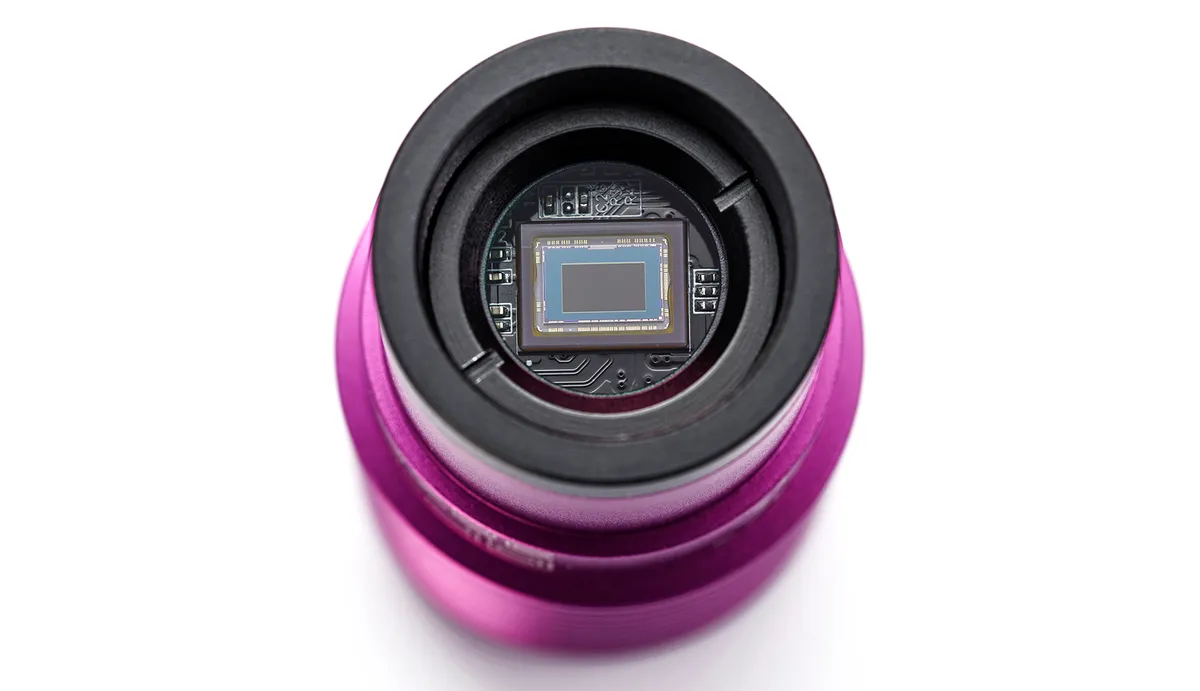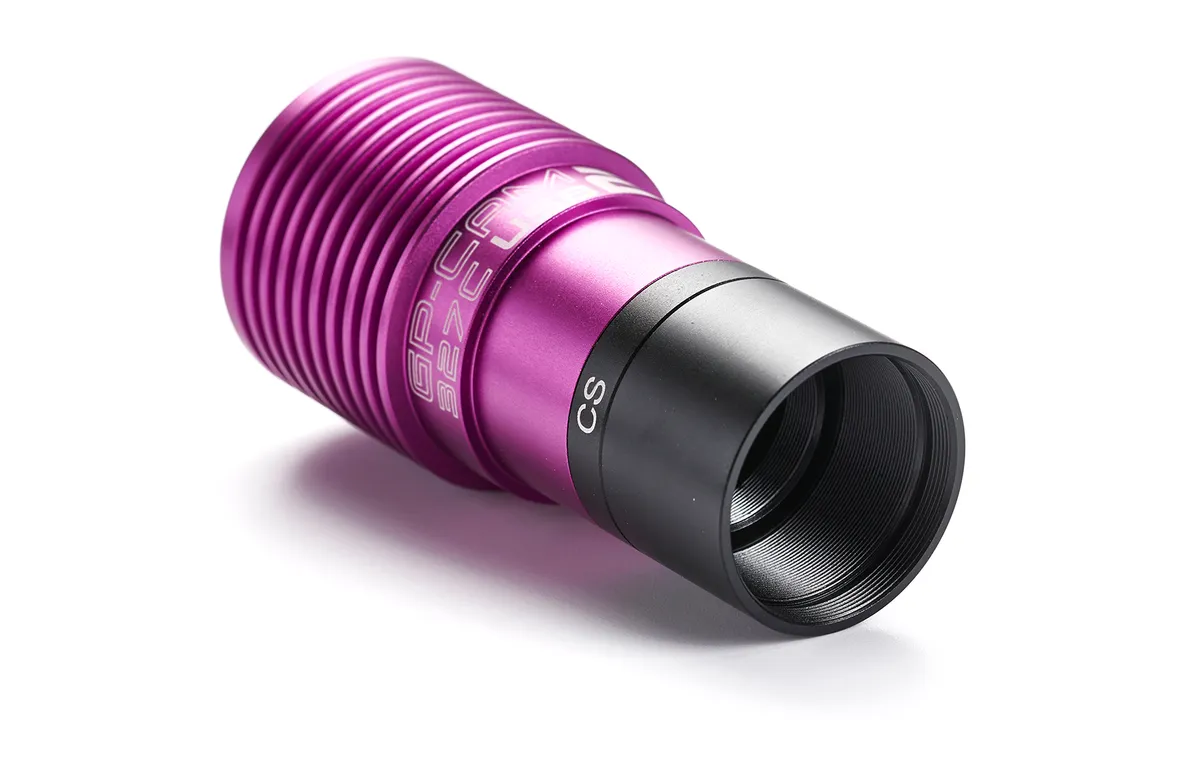Building on the foundation of Altair Astro’s GPCAM astronomy cameras having a good reputation among astronomers, the company has introduced the GPCAM2 327C, a one-shot colour (OSC) camera that offers increased sensitivity over its predecessors.
The simplicity of the GPCAM2 327C, both to set up and to use, makes it perfect for getting the best out of clear-sky opportunities.
Once the camera drivers are downloaded and installed, it simply plugs in and is recognised immediately by the software, so you slew the telescope to your desired target, set the exposure length and gain to what you want, and just enjoy the view.
This type of camera is especially suitable for electronically assisted astronomy (EAA) with live video, and as luck would have it a perfect target emerged in the shape of Comet C/2019 Y4 (ATLAS).
Even in pristine skies it can be difficult to observe much detail in faint comets, and under the suburban conditions surrounding our observatory, this one at mag. 8.0 was a little underwhelming.
However, with the eyepiece swapped for the GPCAM2 327C, the view was quite different. Almost immediately we could see more of the glow around the comet, and with live image stacking, the direction and speed of travel – and some evidence of a tail – could be seen on screen from the comfort of our warm room.
This camera is on our list of the best cameras for astrophotography.

We found that we spent longer observing each target than we would using an eyepiece, and this resulted in a closer connection to the night sky, with the live view contributing to the feeling of ‘seeing it with your own eyes’.
Having the live image available on a laptop or computer screen makes it much easier to share the viewing experience with others, including children or observers who may struggle to identify the target object in an eyepiece.
We enjoyed visiting a wealth of globular clusters available in spring and noted that the colour camera was particularly good for highlighting the different types of stars, showing the red and orange colours well and contrasting them with younger blue ones.
The great cluster in Hercules, M13, was particularly impressive, filling the frame with our 1m focal length telescope.
On fainter galaxy targets, the GPCAM2 proved really useful; where we would normally just be observing a bit of a smudge in our skies, some real detail came through, from the ‘bruise’ on the Black Eye Galaxy, M64, to the swirling dust clouds around the Sunflower Galaxy, M63.
By increasing the exposure time to 60 seconds and taking a series of images, we were able to take some very detailed photos.

In fact, reviewing our images folder revealed that we had enjoyed a bit of an imaging marathon, having acquired a diverse range of multiple targets: including globular cluster M3, open cluster M52, planetary nebulae NGC 6543, the Whirlpool Galaxy, M51 and the Iris Nebula, NGC 7023.
The ease and speed of adjusting the camera settings to suit each target meant more time is spent capturing images, and less time fiddling with settings.
The versatility of the GPCAM2 327C impressed us. After taking images of fainter objects, we turned to a bright 85%-lit waxing gibbous Moon and were able to record an AVI video file instead of individual images – a technique which can also be used for imaging planets.
Using the full bit-depth and resolution of the camera led to a very large file size, over 4.5GB for just under a minute, but the range of shades – from the blacks of the shadows to the white sunlit crater walls – produced a colour image that was neither under, nor over-exposed.
All in all, the GPCAM2 327C is a highly versatile, simple to use, all round astronomy camera, offering great results and value for money.

Advanced sensor
At the heart of the GPCAM2 327C is an advanced CMOS imaging sensor from Sony Semiconductors.
The Sony IMX327 STARVIS sensor offers increased sensitivity over the already impressive IMX290 sensors used in previous versions of the GPCAM, along with low dark current noise characteristics.
The 2.9micron pixels are arrayed in 1920x1080 format, and at full resolution, in 12-bit mode, speeds of up to 18 frames per second (fps) can be achieved on a suitable computer.
However, by decreasing this resolution to 640x480, and 8 bits, we got up to 40fps, while using the region of interest (ROI) setting to reduce the resolution further to enable speeds nearing 60fps.
We were particularly impressed by the low noise (and few unwanted artefacts) from the camera’s sensor, and the natural colour reproduction with minimal processing, which served to add to the feeling of ‘proper observing’.
By keeping the gain setting low, amp glow is nicely controlled, limited to one corner of the frame, and easily dealt with using dark frames. With that in mind a useful push-in silicon end cap is provided for capturing dark frames.

USB 2.0
The camera has a standard USB 2.0 connection, favoured by astronomers for its stability, compatibility with existing equipment and the option to extend the cable runs. The 2m cable provided with the camera is good quality and has a right-angled plug which helps keep things tidy.
Guide port
In addition to the USB connection, the GPCAM2 327C can be linked directly to a compatible mount or auto-guider control using the 1.5m ST4 cable and socket provided. The high sensitivity and low noise characteristics befit a very capable guide camera. It is fully compatible with PHD2 scope guiding software.
Dimensions and weight
Approximately the same size and weight as a standard Plössl eyepiece, the GPCAM2 327C is completely portable, and requires no additional cables or power supply other than the USB connection. It drops neatly into a standard 1.25-inch fitting, while the nicely machined fins on the camera housing help to dissipate heat.
Software options
In addition to the intuitive and easy-to-use AltairCapture software, the camera comes with a 12-month licence for SharpCap Pro. This capable piece of software adds extra functionality to the camera; including assisted Bahtinov mask and other focusing techniques, polar alignment and detailed control of imaging runs.
CS lens mount options
Adding to the already impressive list of uses for the camera, a separately available 120° lens can be attached, making an effective all-sky meteor camera. There is also a 1.25-inch nosepiece included which accepts regular filters. The camera is supplied with an IR/UV cut filter.

Vital stats
- Price £269.50
- Sensor Sony IMX327 STARVIS BSI
- Camera type Colour
- Size 70mm x 39mm diameter
- Weight 70g
- Supplier Altair Astro
- Tel 01263 731505
- www.altairastro.com
This review originally appeared in the July 2020 issue of BBC Sky at Night Magazine.
